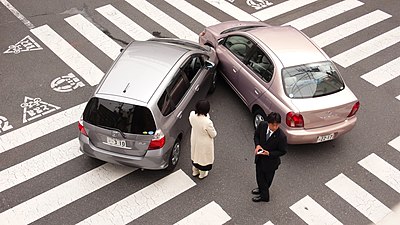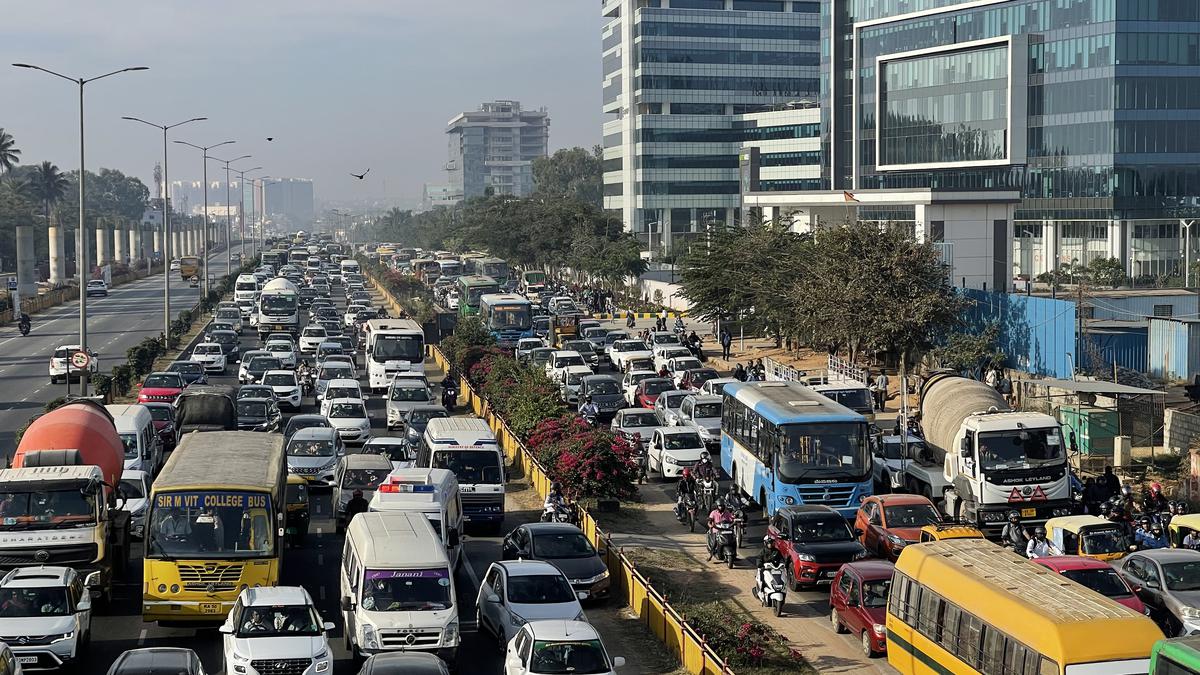Every year, around 1.3 million people are killed on road around the world and about 50 million are injured. Rapid motorisation along with the poor safety quality of road traffice systems and the lack of institutional capacity to manage outcomes contribute to a growing crisis without urgent action, it is forecast that road traffice injury will be the seventh leading cause of death for all by 2030
N Chandra Shekar throws light on this growing endemic and issues related to road safety…
Road traffic injury is a major global public health problem. Rapid motorisation along with the poor safety quality of road traffic systems and the lack of institutional capacity to manage outcomes is contributing to a growing crisis. It has been reported that road traffic crashes result in the deaths of approximately 1.19 million people around the world each year and leave between 20 and 50 million people with non-fatal injuries. More than half of all road traffic deaths occur among vulnerable road users, such as pedestrians, cyclists and motorcyclists. Road traffic injuries are the leading cause of death for children and young adults aged 15–29. In addition to the human suffering caused by road traffic injuries, they also incur a heavy economic burden on victims and their families, both through treatment costs for the injured and through loss of productivity of those killed or disabled. More broadly, road traffic injuries have a serious impact on national economies, costing countries around 3% of their annual gross domestic product. Low-and middle-income countries are estimated to experience even greater economic losses, losing up to 5% of their gross domestic product (GDP) each year. In socio-economic terms, countries around the world are paying a high price for motorised mobility.
Road Safety: A Global Problem
It is now widely accepted that serious health losses in road traffic crashes are largely preventable and predictable – a human-made problem open to rational analysis and effective road safety management. Road traffic systems can be developed that reduce the likelihood of serious or fatal crashes occurring and to minimise injury severity in the event of a crash. This is supported by a substantial body of knowledge on how to achieve significant lessening of the costly, adverse impacts of motorisation.
Understanding Crash Causation
Road accidents are the most unwanted thing to happen to a road user, though they happen quite often. Man behind the wheel plays an important role in most of the crashes. In most of the cases crashes occurs either due to carelessness or due to lack of road safety awareness of the road user. While most of the road users are well aware of the general rules and safety measures while using roads but it is only the laxity on part of road users, which cause accidents and crashes. One of the main causes of accidents and crashes are due to human errors. It has been traditionally understood that the primary cause of road-crash is the driver or other road user errors; however there are a number of other factors contributing to road crashes. Past post-crash assessments of crash contribution by researchers resulted in too great a focus on driver behaviour. Interventions with potentially greater effect were easily overlooked. When the circumstances of road and vehicle allow, routine driver errors translate into collisions, a focus on the infrastructure and vehicle safety levels that interact with routine driver error is a much more useful means of identifying actions to reduce serious casualty outcomes. One of the key problems is that many road standards used in road projects do not provide for the degree of human vulnerability involved in the use of the road network. Furthermore, the efficient and effective police enforcement of safety behaviours, which contribute to the overall safety performance of road safety engineering standards is lacking. Junction design standards and the management of road use from low-to-high speed environments expect vulnerable road users to compete successfully against faster, bigger vehicles, with tragic consequences.
Many factors increase both the risk of road traffic crashes and the risk of death or injury they result in. There are a number of other significant risk factors; the non-use of motorcycle helmets, seat-belts and child restraints; distraction, including the use of mobile phones, leading to impaired driving; unsafe vehicles and unsafe road infrastructure; Inadequate post-crash care; Inadequate enforcement of traffic laws. Some of the most common behaviour of humans which results in accidents are:
Over Speeding
Most of the fatal accidents occur due to over speeding. Increase in speed multiplies the risk of accidents and severity of injury during the accident. Driving at higher speed significantly increases both the likelihood of a crash occurring and the severity of its consequences. For every 1% increase in mean speed there is a 4% increase in fatal crash risk. The risk of death for pedestrians hit by motorized vehicles also rises rapidly as speed increases. A pedestrian hit by a vehicle travelling at 65 kilometres per hour is 4.5 times more likely to die than those hit by a vehicle travelling at 50 kilometres per hour. Faster vehicles are more prone to accident than the slower one and the severity of accident will also be more in case of faster vehicles. The ability to judge the forthcoming events also gets reduced while driving at faster speed which causes error in judgment and finally a crash. Higher the speed, greater the risk. At high speed the vehicle needs greater distance to stop i.e. braking distance. A slower vehicle comes to halt immediately while faster one takes long way to stop and also skids a long distance due to law of notion. A vehicle moving on high speed will have greater impact during the crash and hence will cause more injuries.
Drunken Driving
Driving under the influence of alcohol or other psychoactive substances presents significant risk factor for road traffic injuries. In the case of drink-driving, risk of road traffic injury increases significantly as the driver’s blood alcohol concentration goes up. In the case of drug-driving, the risk of road traffic injury increases to differing degrees depending on the psychoactive drug used. Alcohol reduces concentration. It decreases reaction time of a human body. Limbs take more to react to the instructions of brain. It hampers vision due to dizziness. A blood alcohol concentration (BAC) of up to 0.05 g% is likely to make you at risk of impaired judgment and reduced inhibitions. A BAC of 0.08 to 0.15 g% is likely to put you in a risky state. For every increase in blood alcohol concentration, the risk of accident doubles. Apart from alcohol many drugs, medicines also affect the skills and concentration necessary for driving.
Distraction to Driver
Distraction while driving has become a major cause of accidents. Distractions could be outside or inside the vehicle. One of the major distractions while driving is talking or texting on a cellular phone. The act of talking on phone results in division of brain functioning and hampers reaction time and ability of judgement becoming one of the key reasons of crashes. Some of the distractions on road are adjusting mirrors while driving; playing of stereo/radio in vehicle; animals on the road; banners and billboards.
Non-compliance with Road Rules
One of the most common factors for road crashes is non-compliance with road rules. Jumping a red light has become a common phenomenon across the length and breadth of the country. It is a common sight at road intersections that vehicles cross without caring for the light. A red light jumper not only jeopardizes his life but also the safety of other road users. This act by one driver incites other driver to attempt it and finally causes chaos at crossing. This chaos at intersection is the main cause of traffic jams. Eventually everybody gets late to their destinations. It has also been seen that the red light jumper crosses the intersection with greater speed to avoid crash and challan but it hampers his ability to judge the on-going traffic and quite often crashes.
These facts highlight the effect of lower enforcement presence and inadequate traffic control mechanism. Studies have shown that traffic signal followed properly by all drivers saves time and commuters reach destination safely and timely. Non-adherence to lane driving and overtaking in a wrong manner is one more factor in road crashes.
Avoiding Safety Gears like Seat Belts and
Helmets
Use of seat belt in four-wheeler is now mandatory and not wearing seat belt invites penalty, same in the case of helmets for two wheeler drivers. Wearing seat belts and helmet has been brought under law after proven studies that these two things reduce the severity of injury during accidents. Wearing seat belts and helmets doubles the chances of survival in a serious accident. Safety Gears keep you intact and safe in case of accidents. Two wheeler deaths have been drastically reduced after use of helmet has been made mandatory. One should use safety gears of prescribed standard and tie them properly for optimum safety.
Main road traffic crash types
• Walking and cycling across or along the road. A vulnerable road user’s risk increases steeply in mixed speed traffic when traffic speeds are greater than 30 km/h.
• Head-on crashes typically kill and seriously injure occupants even in the best designed vehicles at speeds greater than 70 km/h.
• Side impacts at intersections typically kill and seriously injure occupants even in the best designed vehicles at speeds greater than 50 km/h.
• Run-off-road crashes into rigid fixed objects produce a high number of fatal and serious outcomes at speeds greater than 70 km/h for frontal impacts and 50 km/h for side impacts even in the best designed vehicles.
The Situation in India
In India, about 80,000 people are killed in road crashes every year which is 13% of the total fatality all over the world. Exposure to adverse traffic environment is high in India because of unprecedented rate of motorization, growing unplanned urbanization and lack of effective traffic management. As a result, incidents of road accidents, traffic injuries and fatalities have remained unacceptably high in India.
Status of Road Accidents in India
• As per the National Crime Records Bureau (NCRB) data, there are around 1.5 lakh deaths on India’s roads every year, of which one third are accounted for by National Highways.
• Though India accounts for about 1% of motor vehicles globally, it records more than 11% of road traffic deaths.
• Lancet Report: India accounts for almost 10% of all crash-related deaths, while accounting for only 1% of the world’s vehicles.
Causes of high incidence of road accidents and fatalities in India
• Traffic rules violations – Over speeding and driving on wrong side together accounted for 76% of total accidents along with other violations like drunken driving, red light jumping and use of mobile phones. Over speeding and undisciplined driving – Approx 50,000 accidents in India are on account of over speeding.
• Inadequate surveillance – ‘Hit and run’ cases go un-investigated due to absence of surveillance infrastructure, 73% two-wheeler accident victims do not wear helmets and a significant proportion of four wheelers do not wear seatbelts or possess driving license. Lower enforcement presence in high risk areas – Over 50% accidents occurred in open and sparse areas and 73% at uncontrolled junctions. 64% of accidents occurred on straight roads but signboards and warnings are usually found on steep and curved roads. These facts highlight the effect of lower enforcement presence and inadequate traffic control mechanism in isolated areas.
• Skewed road traffic engineering – Two-wheelers accounted for the highest share in total road accidents but have been neglected during road traffic engineering and planning as shown by lack of separate lanes for them and pedestrians. Motorization and Urbanisation – Are also the main causes of road crash fatalities.
• Low quality infrastructure, standards and maintenance – In India, quality of road construction is low and road standards are not enforced by builders, which lead to development of potholes; also maintenance of roads is a corrective measure than preventive in India. One of the glaring features of Indian roads is faulty road designs; lack of caution signs; big potholes and illegal speed breakers.
• Vehicular load condition – Over-loaded vehicles directly and indirectly causes road mishaps. Overloaded vehicle is accident prone as it is difficult to control during an emergency and it also affects quality of roads, which further increase vulnerability of travellers to accidents.
• Legislative lacunae – Old vehicles ply without regulation culminating into tyre bursts on high speed expressways. Weak Vehicle safety standards in India
• Ineffective and inefficient road regulations – Due to lack of caution signs, big potholes, illegal speed breakers.
• Encroachment of road – Unruly road congestion caused by hawkers disrupts normal movements of vehicles.
• Laxity in driving license regulations – Lax procedure in obtaining a driving license
• Lack of quality driving schools – Drivers’ fault was responsible for 80% killings in road accidents in 2016, underscoring the need for improved enforcement and also for establishment of quality driving schools, driver testing centers and standardized driver license regulations by RTOs.
• Inefficient public transport – The paucity of end to end public transport and its inefficiencies in India leads to the public opting for private vehicles.
• Lack of emergency medical services – Administration and availability of first aid at accident site and transportation of victim from site to hospital is found wanting on majority of highways. Lack of emergency health services availability – In 2017, 65% road fatalities took place in rural areas, suggesting inadequate trauma care facilities in rural areas.
Government of India’s Policy Initiatives for
Improving Road Safety
The National Road Safety Policy looks at overall road safety, and outlines initiatives to be taken by the Government at all levels. The government is committed to:
• Raise Awareness about Road Safety Issues
• Establish a Road Safety Information Database
• Ensure Safer Road Infrastructure
• Safer vehicles with built in features at the design stage
• Road Traffic Safety Education and Training
• Enforcement of Safety Laws
• Emergency Medical Services for Road Accidents
• Government has decided to establish a dedicated National Road Safety and Traffic Management Board (NRSTMB) to oversee the issues related to road safety and evolve effective strategies for implementation of the Road Safety Policy.
• Motor Vehicles (Amendment) Bill, 2016 passed in Lok Sabha and pending at committee stage, seeks to address various issues, including road safety: The Bill allows government to order for recall of motor vehicles if it may cause damage to environment, driver or other road users. Good Samaritan will not be liable for any civil or criminal action for any injury to or death of an accident victim.
• Bill increases penalties for several offences under the Act like drunken driving
• Cashless treatment for road accident victims during golden hour.
• Compensation in case of death in hit and run accident, where no person can be held liable for the accident
However, the Bill does not provide for any road safety agencies or improving road design and engineering.
Other Steps Taken by the Government for the Roads Sector
• Constitution of National Road Safety Council (NRSC)/ State Road Safety Councils and District Committees.
• Measures and awareness campaign on road safety like telecasting/broadcasting of T.V. spots/Radio jingles, display of cinema slides, hoardings, organizing Road Safety Week.
• High priority has been accorded to identification and rectification of black spots (accident prone spots) on national highways.
• Comprehensive database of traffic accidents to develop targeted safety programmes.
• Anti-lock Brake System (ABS) has been made mandatory for some classes of vehicles.
• In order to ensure safe and smooth flow of traffic, Ministry of Road Transport & Highways has envisaged a plan for replacement of all the Level Crossing on National Highways under a scheme Setu Bhartam.
• Setting up of model driving training institutes in States and refresher training to drivers of Heavy Motor Vehicle in the unorganized sector.
• Road safety has been made an integral part of road design at planning stage.
• Providing cranes and ambulances to various State Governments under the National Highway Accident Relief Service Scheme for development on National Highways.
Way Ahead to Mitigate Road Accidents
• Education and Awareness Campaigns – Launching comprehensive education and awareness campaigns is essential to foster a culture of road safety. These campaigns should target all road users, including drivers, pedestrians, and cyclists. They should emphasize the importance of understanding and following road safety rules, recognizing potential hazards, and practicing responsible road behavior. Through these campaigns, individuals can become more aware of their role in preventing accidents and minimizing risks. Conduct road safety awareness campaigns to educate the public about the importance of following traffic rules and safe driving practices.
• Strict Law Enforcement – Enforcing traffic rules and regulations is a critical aspect of accident prevention. Stringent enforcement sends a clear message that violations will not be tolerated. Penalties for speeding, reckless driving, driving under the influence (DUI), and failure to wear seatbelts must be consistently applied. This discourages dangerous behaviour and instils a sense of accountability among road users, leading to safer road practices. Enforcement of Traffic Laws to strengthen law enforcement agencies to ensure strict adherence to traffic rules and impose penalties for violations.
• Improved Infrastructure – Invest in better road infrastructure, including wider roads, well-maintained highways, and pedestrian-friendly amenities. Investing in well-designed infrastructure is crucial for accident prevention. Roads should be designed with safety in mind, incorporating features such as proper signage, clear road markings, and well-lit streets. Adequate pedestrian crossings, pedestrian-friendly pathways, and designated cycling lanes create a safer environment for vulnerable road users. Properly designed infrastructure reduces confusion, minimizes conflicts, and mitigates the likelihood of accidents caused by inadequate road layouts.
• Public Transport – Promote the use of public transportation to reduce the number of private vehicles on the road. Developing and promoting reliable public transportation systems offers a sustainable solution to reducing overall traffic volume. Well-connected and efficient public transportation encourages people to opt for safer alternatives to personal vehicles, especially for daily commutes. Enhanced public transportation systems also alleviate traffic congestion, leading to fewer accidents caused by traffic jams. By making public transport accessible, convenient, and affordable, communities can encourage a shift toward safer modes of travel.
• Advanced Driver Training – Introducing advanced driver training programs goes beyond basic driving skills. These courses enhance drivers’ abilities to anticipate and react to potential hazards. Techniques such as defensive driving, maneuvering in challenging situations, and understanding the limitations of vehicles can significantly reduce the risk of accidents. Equipping drivers with these skills makes them better able to navigate complex traffic scenarios safely.
• Modernize Licensing Process – Implement a transparent and modernized driver’s licensing system to ensure that only qualified individuals receive licenses.
• Use of Technology – Employ technology like CCTV cameras, speed cameras, and traffic management systems to monitor and manage traffic more effectively. Smart Traffic Management. Leveraging technology for smart traffic management offers a proactive approach to accident prevention. Traffic cameras, sensors, and real-time traffic data can monitor traffic flow, congestion points, and unusual patterns. With this data, authorities can adjust traffic signal timing, redirect traffic, and implement diversions to reduce congestion and the risk of accidents. Smart traffic management also enhances emergency response times, ensuring prompt assistance in case of accidents or road incidents.
• Strict Driving under the influence (DUI) Laws – Enforce strict laws against drunk driving, including hefty fines and license suspensions. Implementing sobriety checkpoints is an effective strategy to deter and catch drivers operating vehicles under the influence of alcohol. These checkpoints involve law enforcement officers stopping vehicles to conduct tests for alcohol impairment. Coupled with this, awareness campaigns should promote responsible drinking habits and the dangers of intoxicated driving. By combining enforcement with education, communities can curb accidents caused by impaired driving. Preventing drunk driving saves lives and ensures the safety of all road users.
• Pedestrian Safety Measures – Construct safe pedestrian crossings, footpaths, and pedestrian overpasses to protect those on foot. Prioritizing the safety of pedestrians and cyclists is essential to reduce accidents involving these vulnerable road users. Designing and implementing dedicated lanes and crossings for pedestrians and cyclists provides them with safe spaces to travel. Simultaneously, public awareness campaigns can educate pedestrians and cyclists about their rights and responsibilities on the road. Encouraging mutual respect and understanding among all road users fosters a harmonious coexistence and reduces the risk of accidents.
• Community Engagement – Involve local communities in road safety initiatives to create a sense of responsibility among citizens. Involving local communities, schools, and organizations in road safety initiatives creates a shared responsibility for road safety. Community engagement can include workshops, seminars, and awareness campaigns that educate individuals about safe road behaviors. Schools can integrate road safety education into their curriculum, fostering responsible road habits from a young age. When communities actively promote road safety, a collective effort is formed to prevent accidents, encourage adherence to rules, and prioritize the well-being of all road users.
Every year, countless lives are impacted by road accidents, highlighting the urgent need for comprehensive strategies to enhance road safety. This pressing issue calls for a collective effort to implement effective solutions that mitigate risks and create safer road environments for everyone. It’s essential for all stakeholders to collaborate and prioritize road safety to save lives and prevent injuries on Indian roads. Road safety in India is a multifaceted challenge that requires progressive shifts in thinking and practice about how to manage road safety. By addressing the challenges mentioned above and implementing the suggested solutions, India can work towards significantly reducing the number of road accidents and making its roads safer for everyone. The 2030 Agenda for Sustainable Development has set an ambitious target of reducing road traffic deaths and injuries by 50% by 2030.






